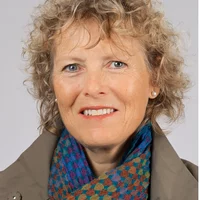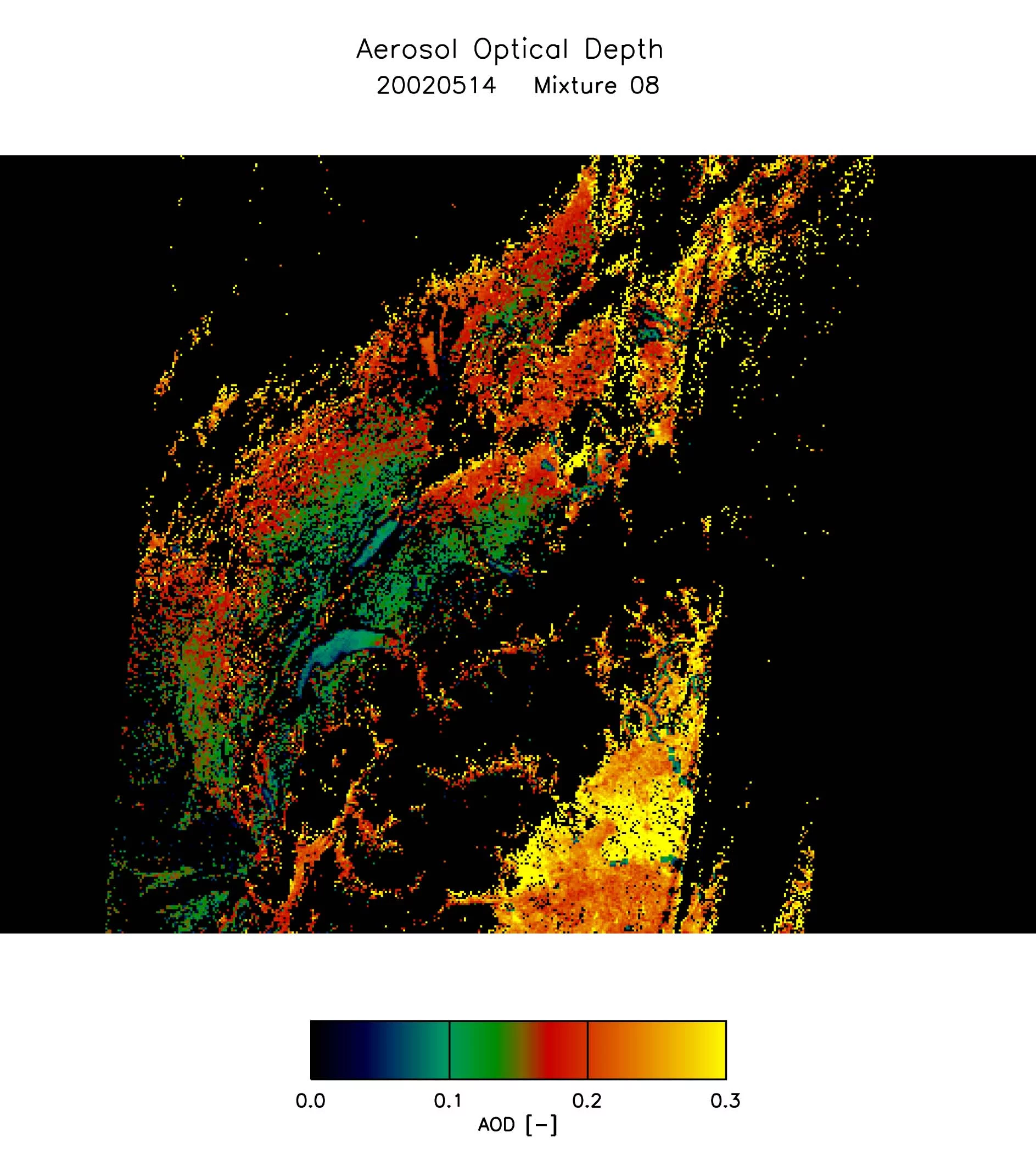Duration: 2000-2009
Contact: Johannes Keller,
Contact: Johannes Keller,
Scope of project
TROPOSAT and its successor ACCENT-TROPOSAT-2 are networks which bring together scientists involved in remote sensing of the troposhpere. The projects of the members focus on the development and improvement of methodologies to retrieve information on gaseous and particulate constituents of the troposphere from space.
The objective of the contribution of our laboratory is the Retrieval of aerosol properties (aerosol optical depth, mixture, etc) from space-borne sensor data. The project focuses on data of the Multi-angle Imaging SpectroRadiometer (MISR) onboard NASA's satellite Terra. An algorithm has been developed which retrieves simultaneously aerosol and surface optical properties by analyzing radiance data of the MISR cameras at 9 view angles and 4 spectral bands. MODTRAN 4 is the radiative transfer code used to simulate radiance look-up tables. In the frame of ACCENT-TROPOSAT2 the results of the algorithm have been compared to retrievals of different algorithms.
The objective of the contribution of our laboratory is the Retrieval of aerosol properties (aerosol optical depth, mixture, etc) from space-borne sensor data. The project focuses on data of the Multi-angle Imaging SpectroRadiometer (MISR) onboard NASA's satellite Terra. An algorithm has been developed which retrieves simultaneously aerosol and surface optical properties by analyzing radiance data of the MISR cameras at 9 view angles and 4 spectral bands. MODTRAN 4 is the radiative transfer code used to simulate radiance look-up tables. In the frame of ACCENT-TROPOSAT2 the results of the algorithm have been compared to retrievals of different algorithms.
Key findings
- The algorithm is capable of retrieving simultaneously ground level extinction coefficient, vertical aerosol optical depth AOD, surface reflectance and best fit aerosol mixture over water (lambertian reflector assumed).
- Retrieved AOD agrees with sun photometer measurements and with the MISR operational product.
- Clouds and bright surfaces are automatically rejected.
- MODTRAN 4 is capable of simulating scattering and absorption processes correctly for AOD (550 nm) less than about 0.5 .
- Extinction coefficient and AOD over vegetation are too low. This is likely due to the fact that bidirectional surface reflection is insufficiently taken into account in MODTRAN 4.
- However, inter-comparisons with other sensors, retrieval algorithms and atmospheric radiative transfer models reveal that the results (radiance, AOD) are similar to those of the other models and lie within the nominal errors set up for the inter-comparison.
Publications
Journal Articles
Keller J., Bojinski S., Prevot A. S. H., 2007. Simultaneous retrieval of aerosol and surface optical properties using data of the Multi-angle Imaging SpectroRadiometer (MISR). Remote Sensing of Environment 107 (1-2), 120-137.Wagner T., Burrows J., Deutschmann T., Dix B., Hendrick F., von Friedeburg C., Frieß U., Heue K.-P., Irie H., Iwabuchi H., Keller J., McLinden C., Oetjen H., Palazzi E., Petrotoli A., Platt U., Postylyakov O., Pukite J., Richter A., van Roozendael M., Rozanov A., Rozanov V., Sinreich R., Sanghavi S., Wittrock F., 2007. Comparison of box-air-mass-factors and radiances for MAX-DOAS-geometries calculated from different UV/visible radiative transfer models. Atmospheric Chemistry and Physics 7 (1), 1809-1833.
Kokhanovsky A. A., Deuze J. L., Diner D. J., Dubovik O., Ducos F., Emde C., Garay M. J., Grainger R. G., Heckel A., Herman M., Katsev I. L., Keller J., Levy R., North P. R. J., Prikhach A. S., Rozanov V. V., Sayer A. M., Ota Y., Tanre D., Thomas G. E., Zege E. P., 2010. The inter-comparison of major satellite aerosol retrieval algorithms using simulated intensity and polarization characteristics of reflected light. Atmos. Meas. Tech. 3 (4), 909-932.
Funding
ACCENT
Last Update 31 Oct 2011 - 17:08
Last Update 31 Oct 2011 - 17:08


